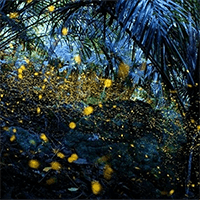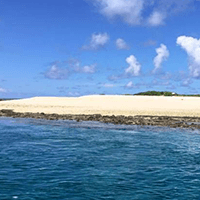Things to do in Osaka Castle/Kyoubashi/Eastern City
- Age 6~Age 75
- Within 1 hour
- 10:00 / 11:00 / 12:00 / 13:00 / 14:00 / 15:00 / 16:00 / 17:00 / 18:00 / 19:00
The calligraphy of death is something that a samurai writes down with a brush as his last words in this world when he foresees his death. (Death refers to leaving this world) Customers can write their favorite kanji. You can select a character (kanji) and write it with an extra-large brush on SAMURAI paper (16 times the size of normal hanshi), which is made by combining two sheets of hanshi paper that is 8 times the size of normal hanshi paper. (Example) Yukimura Sanada's death note, ``If you go to live in an indefinite floating world, you will not know what will happen one day later.'' (In such an unstable world, we do not know what will happen tomorrow. Please think of Naniwa as something that doesn't exist in this world.'' Toyotomi Hideyoshi's deathbed writings, ``The dew falls, the dew falls and disappears.'' I wonder if Naniwa is also a dream within a dream (I became a citizen, but the dew fell and disappeared.) It was a life that seemed to disappear.)
今年の締めくくりとして、袴を着て、通常より16倍大きな半紙(サムライ半紙)に自身の好きな文字を豪快に記入できる書道をさせてもらいました!!! 声を出して、思い切って描く一文字に感動します!! 巻藁斬り体験もさせてもらい、スパッと切れる感覚が最高でした!!!メンズだと最高の空間でテンション爆上がりです!!!
- Age 2~Age 99
- Within 1 hour
- 09:30 / 10:30 / 13:00 / 15:00 / 18:00 / 19:30
Recommended for customers who want to learn authentic tea ceremony You can learn authentic tea ceremony from a tea ceremony master who has a very difficult qualification. The tea ceremony master in charge is in charge of tea ceremonies at the sub-temple of a famous temple in Japan. This is a popular class that attracts many customers from Japan and abroad who want to learn this tea ceremony master. We receive many reservations from customers every month. The class is famous and has six classrooms in Osaka and Kyoto. Currently, we teach Japanese culture in classrooms, schools, companies, hotels, and community activities. We have been highly praised as an authentic cultural class by world-famous five-star hotels and companies. Achievements 5-star class with more than 1,000 reviews on other activity sites, and many awards. The classroom facility is an authentic tea room. It is not just a room. There is an additional tea room usage fee of 1,000 to 2,000 yen. For Kyoto classrooms, if there are multiple participants, it is 1,000 yen per person. For Kyoto classrooms and Honmachi classrooms, if the total number of participants at the time of experience is only one person, an additional fee of 2,000 yen will be charged. There is also a special tea room that can only be used at our classroom. This price is only possible at our classroom. In recent years, prices have been rising around the world, but the prices at our classes in Japan have remained the same for a long time. About the "Tea Ceremony Experience" (1) You can only learn this here (2) The location of the experience may not be available on the reserved date due to facility circumstances. In that case, you will be guided to the nearby Honmachi or Shitennoji classrooms. If the location is changed, we will confirm with the customer and make the necessary arrangements. Even if the location is changed, there are other classrooms nearby, so it will not be considered a cancellation on the organizer's side. Nearby classrooms Honmachi classroom: within walking distance of Honmachi subway station Shitennoji classroom: within walking distance of Shitennoji-mae-Yuhigaoka subway station
We really enjoyed the lesson, we felt really involved in learning. However be prepared for a real class with a teacher being a little bossy
- Age 6~Age 70
- 1~2 hours
- 11:00 / 14:00 / 17:00 / 20:00
Osaka no Jin ⚔ Pilgrimage to sacred places refers to the stages of battles such as the 1614 (Keicho 19) battle "Osaka Winter Jin" and the 1615 (Genna 1) restarted battle "Osaka Summer Jin" and other battles. It is to visit places connected to Osaka Castle as sacred places with “SAMURAI STYLE”. In addition, the term ``Japan's best soldier, who acted with great courage and speed'' in that battle was a name used to praise Sanada Nobushige (Yukimura), who was loyal to his lord, did not betray him even with money or territory, and was close to Tokugawa Ieyasu during the Summer Siege in Osaka. . Yukimura Sanada shined dazzlingly as a Sengoku military commander in the battle that concluded the Sengoku period. His vivid life still fascinates many people today, and let's make a pilgrimage to the sacred place of his glorious battle at Osaka, where he was praised as ``the greatest soldier in Japan.''
最近チェックしたプラン
Please wait a moment
![[Osaka castle] Learning Bushido & Zen at Samurai Calligraphy in kimonoの画像](https://img.activityjapan.com/10/52953/10000005295301_0NLp2Urf_3.jpg?version=1735455906)
![[Osaka, Osaka Castle area] Authentic tea ceremony by a tea master who teaches at a sub-temple of a famous temple. Classes near Osaka Castle.の画像](https://img.activityjapan.com/10/22663/10000002266301_OCJ30vUn_3.jpeg?version=1655087709)
![[Osaka/Tamatsukuri] Osaka no Jin "Hinomoto's No. 1 Soldier" pilgrimage tour guide (Tamatsukuri area)の画像](https://img.activityjapan.com/10/52625/10000005262501_xEnFGyJR_3.jpg?version=1706264164)







